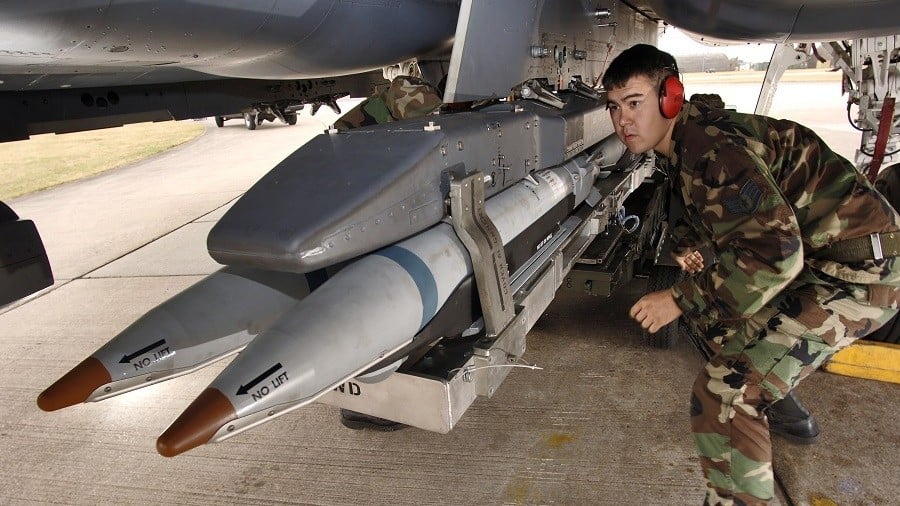Over the past year, Ukraine has been seeking weapons with ranges greater than 69 kilometers to be able to strike and disrupt Russian supply lines and concentration points.
In response, Boeing partnered with Saab to develop the Ground-Launched Small Diameter Bomb (GLSDB) with a range of 161 km. The glide bomb, with its small wings to extend its range, is a combination of the GBU-39 Small Diameter Bomb (SDB) and an M26 rocket engine. Both are common in the US arsenal and are relatively low cost.

Ukrainian servicemen monitor the sky at the front line near the town of Bakhmut. Photo: Reuters
The GLSDB's navigation system allows it to navigate around obstacles such as mountains and known air defense systems. However, it has also become a target for Russian jamming.
While Boeing claims the weapon can overcome some of the jamming, a source said it will take Boeing months to fix.
Ukraine has been using GLSDB since the beginning of this year and experts have stressed that it does not perform well on the battlefield due to jamming.
Jamming occurs when a huge amount of energy is sent into an area, overwhelming the signal of a device. Russia has used the tactic on radios, Ukrainian drones, and even GPS-guided 155mm Excalibur artillery shells.
Jamming on the battlefield in Ukraine “is a reality that many weapons systems have encountered and have had to come up with different solutions,” said Tom Karako, a weapons expert at the Center for Strategic and International Studies.
Currently, in addition to the above-mentioned long-range glide bombs, Ukraine is also using the Army Tactical Missile System (ATACMS) with a range of up to 300 km to attack targets in the conflict with Russia.
Ngoc Anh (according to Reuters)
Source: https://www.congluan.vn/bom-luon-tam-xa-ukraine-khong-hieu-qua-truoc-kha-nang-gay-nhieu-cua-nga-post296690.html




































![[Photo] Prime Minister Pham Minh Chinh chairs Government Conference with localities on economic growth](https://vstatic.vietnam.vn/vietnam/resource/IMAGE/2025/2/21/f34583484f2643a2a2b72168a0d64baa)

























































Comment (0)